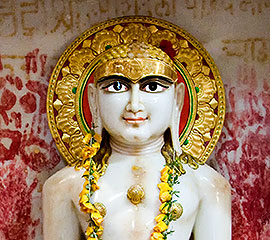Mumbai: Gateway of India, Elephanta Cave Temples, Gandhi Museum, Jain Temple
After arriving very late the previous evening, our group gathers at eleven in the morning for our first outing in India: a trip to Elephanta Island and its cave temples. We are at Mumbai (formerly and still occasionally known as Bombay), the capital of the state of Maharashtra, with a population of about 18 million. Besides being the financial center of India, it is also the nation's busiest port. Our hotel, the Taj President, is in the southern part of Mumbai, near the harbor and not far from another hotel in the Taj chain, the Taj Mahal Palace, which was bombed by terrorists in 2008.
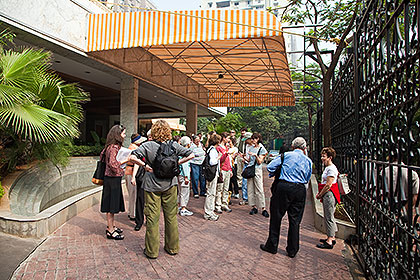
The front of the hotel is protected by an iron barrier and high security.
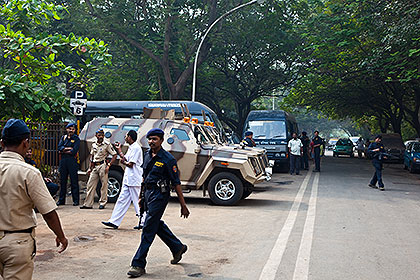
Police with armored vehicles are always present.
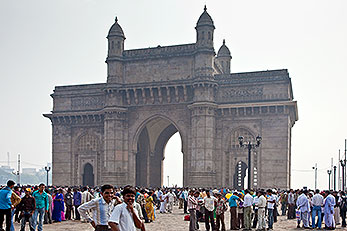
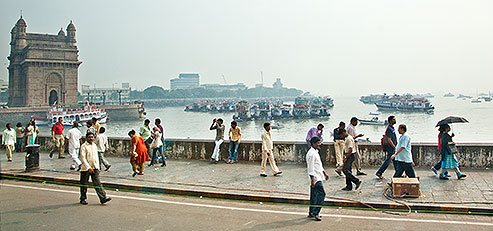
The harbor is just a short drive from the hotel; we leave our bus and approach the ferry docks through the massive Gateway of India (above left), somewhat similar to the Arc De Triumphe in Paris. An unusual number of people are gathering there, to participate in a celebration connected with B.R. Ambedkar, author of the Indian Constitution. We push through the crowd to reach our ferry. After less than an hour on the boat we arrive at Elephanta Island, where a shuttle on a miniature train completes our journey to the foot of the hill below the Elephanta Caves.
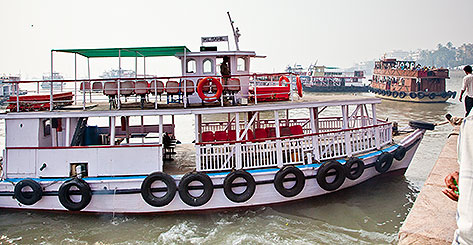
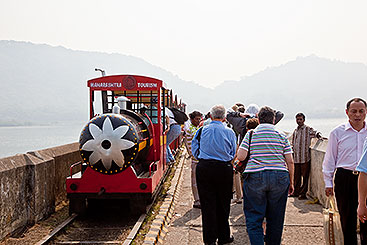
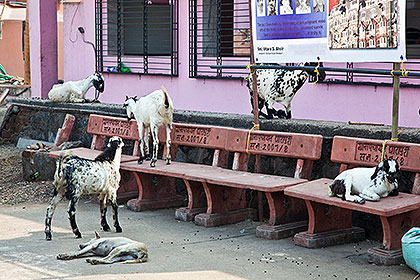
Benches have been provided for goats, some of which use them.
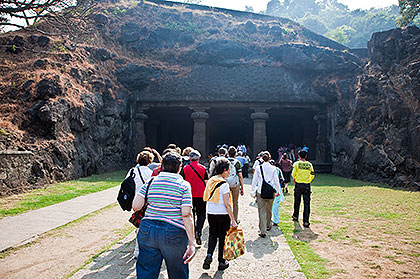
After climbing the hill, we approach the northern entrance to the caves.
Elephanta Cave Temples
A UNESCO World Heritage Site, the Elephanta Cave Temples were carved into a cliff on this island in the 6th Century AD. They are dedicated to the Hindu god Shiva, and the images carved in stone within them depict aspects of mythology surrounding him, his consort Parvati, and their devotees and adversaries. My deep appreciation goes to Michael Di Giovine, who previewed these pictures and provided subject matter identification.

Gangavataran-Shiva -- Ganges arriving on earth.
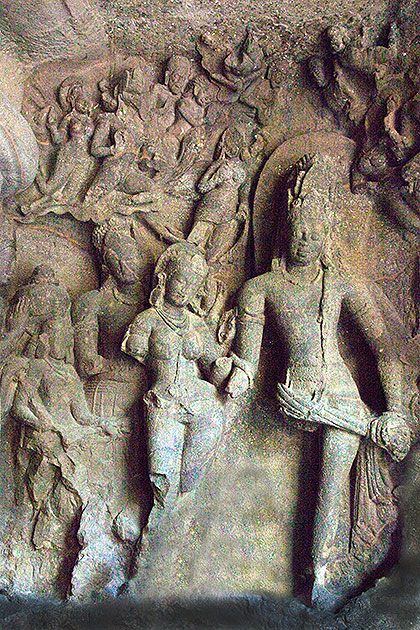
Marriage of Shiva and Parvati, his consort. Notice how the eyes of both lovers are fixed on each other.
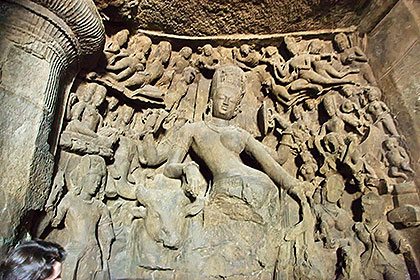
Ardhanariswara Shiva. From an art-historical standpoint this is one of the most important images in the cave; it represents Shiva as half-male and half-female (and thus the totality of creation). To his right (our left) notice his mount, the bull Nandi.
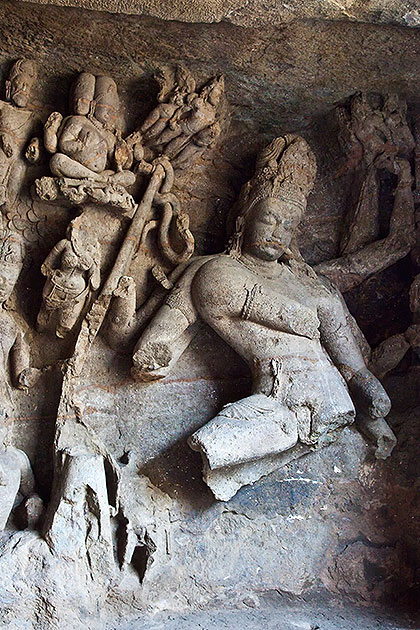
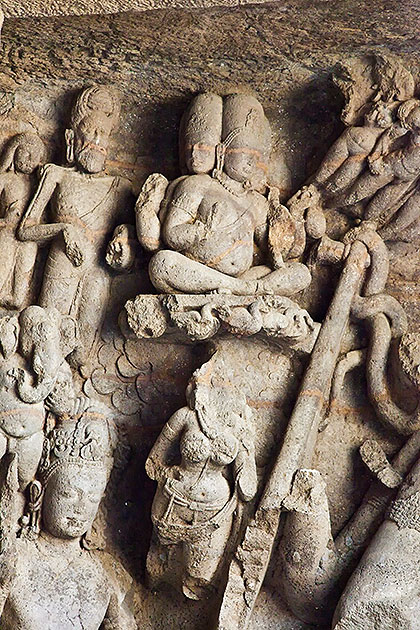
Left, Shiva as Nataraja, the King of the Dancers. He is performing the Tandava, the dance that ends this world’s existence, at the end of the kali-yuga. The background shows that this act is full of action: there is the 3-headed Brahma sitting on a flock of swans; behind him are naked ascetics, and below him are Shiva’s two sons, the elephant-headed Ganesh (God of Beginnings) and Kumara (God of War). His consort Parvati is at his other side (on our right), and in front of him is the musician Tandu. At right is a detail view, better showing Grandfather Brahma, Ganesh and Kumara.

Shiva as Lakulisa or the Yogishwa: this depicts the 28th and last incarnation of Shiva, the contemplative Lakulisa. He is depicted as a yogi seated on a lotus held up by two nagas. The left side of this scene was hard to bring out of darkness because it was almost totally unlit.
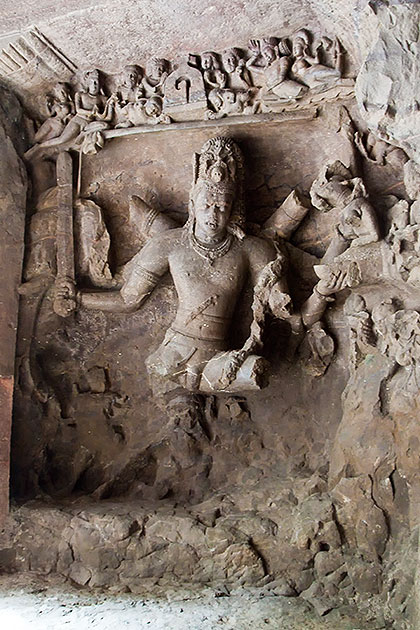
Left, Shiva impaling demon Andhaka. Right, Shiva and Parvati on mount Kailasa. Below them is a badly damaged image of Ravana, the king of the Rakshasas. The story goes that Ravana, the king of the rakshasa race (which is between man and god in the social hierarchy) had performed so many austerities that he was almost as powerful as the Gods; in his arrogance he attempted to disrupt Shiva and Parvati’s lovemaking as they sat in their mountain abode; Shiva pressed one toe down and the entire mountain pinned Ravana for thousands of years, until Ravana performed many austerities and became dedicated to Shiva. Compare this photo to the famous depiction of "Ravana shaking Mt. Kailasa" at the Kailasanatha Temple at Ellora (see a photograph of that sculpture on the Ellora web page).

Mahesamurti, representing Shiva in three manifestations: Creator (right), Preserver (center) and Destroyer (left).
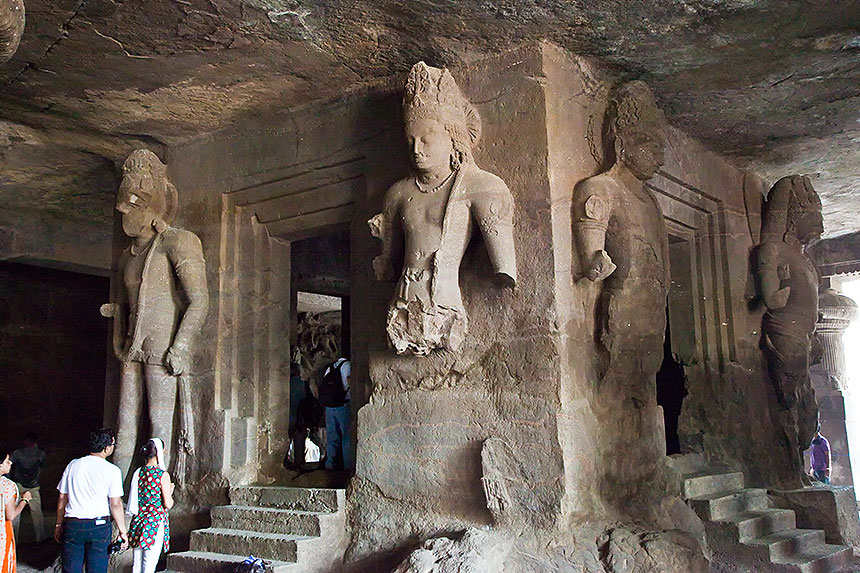
Guardian figures of the Sanctus sanctorum (shrine), where the Shiva-linga is housed. The Shiva-linga is a more ancient figurative representation of Shiva, and brings to mind all of the aspects of Shiva that are depicted more literally in the totality of the bas reliefs at Elephanta.
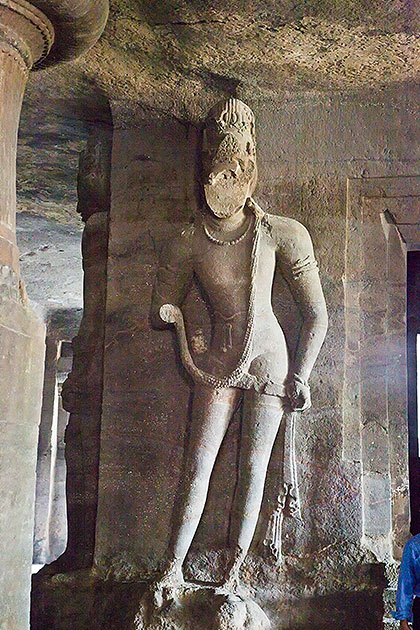
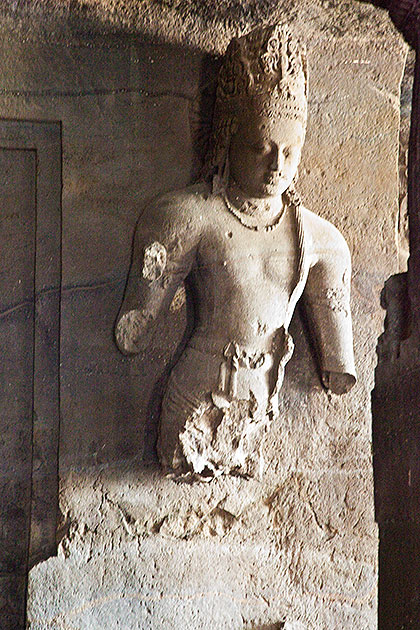
These are details of the left two figures in the previous photo above.
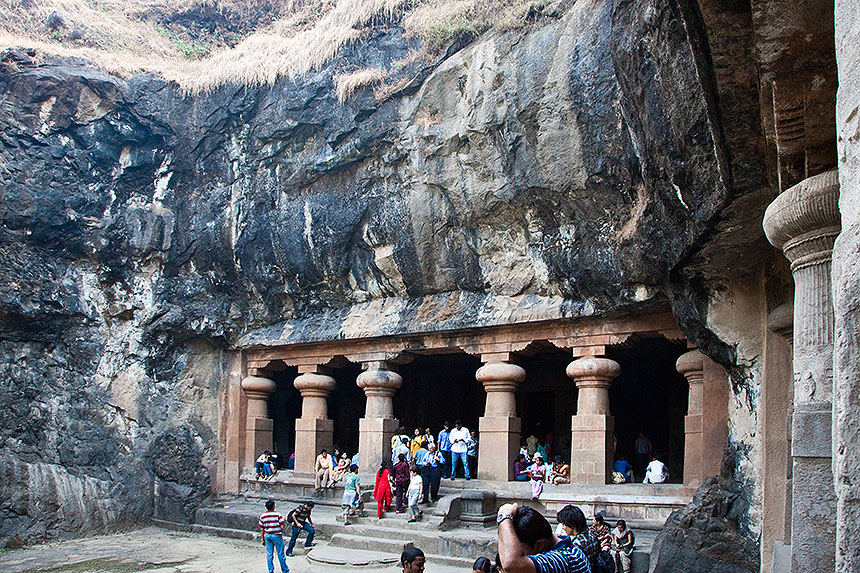
The eastern entrance to the caves.
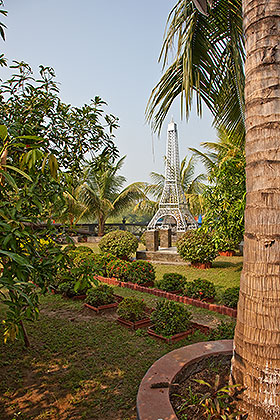
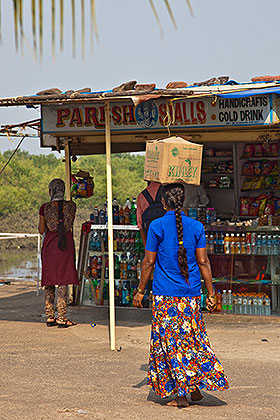
After leaving the caves and making our way to the bottom of the hill, we see a garden with a miniature Eiffel Tower, and a pretty good balancing act.
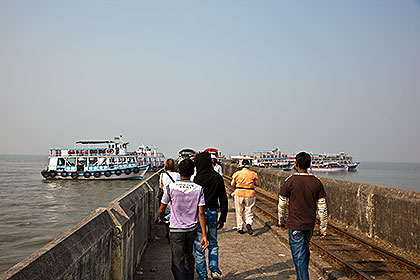
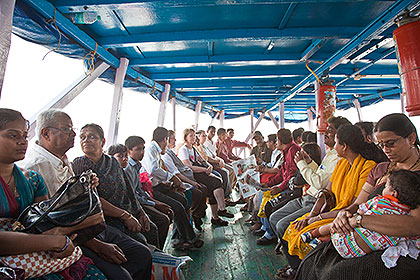
We board another rickety wooden ferryboat for the ride back to Mumbai.
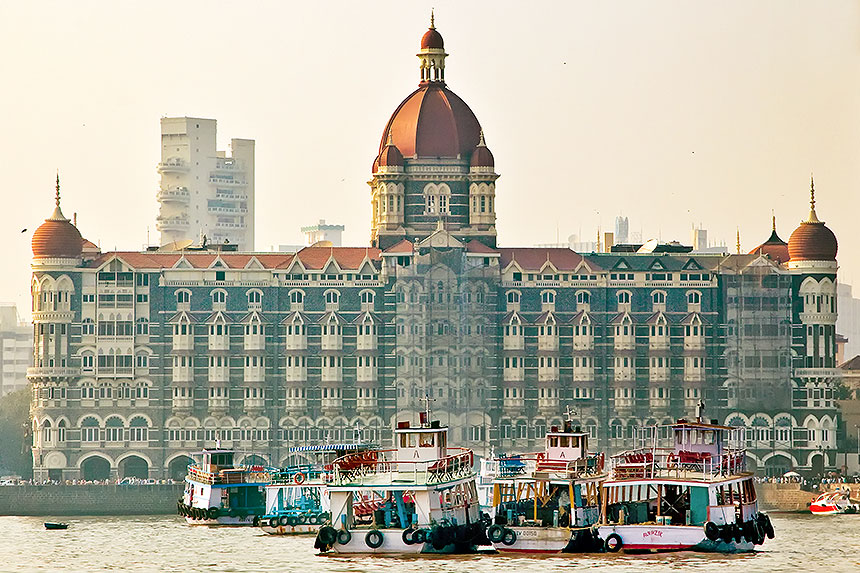
As we approach the ferry terminal at Mumbai we get a good view (through the smog) of the Taj Mahal Palace & Tower, which was one of the targets of the 2008 terrorist attack on Mumbai. The five star hotel is partly open again, while further reconstruction continues.


Now we are back at the Gateway of India, where the crowd has continued to grow.
Nearby we notice a window with a nice collection of colored pigments.
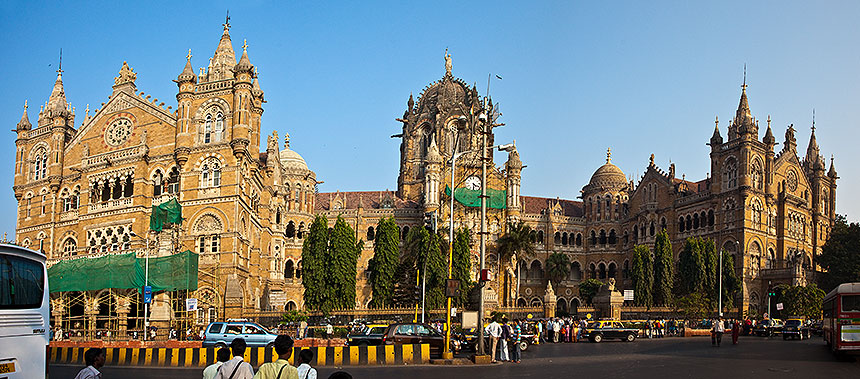
On our way to our next destination, our bus stops just long enough for me to grab this rather distorted panoramic view of the Victoria Terminus Railway Station, a Victorian Gothic structure completed during British rule in 1888. It is now renamed Chhatrapati Shivaji Terminus, and has been designated a UNESCO World Heritage Site. But we do not linger here to explore it.
Gandhi Museum
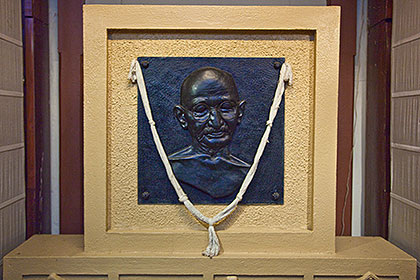
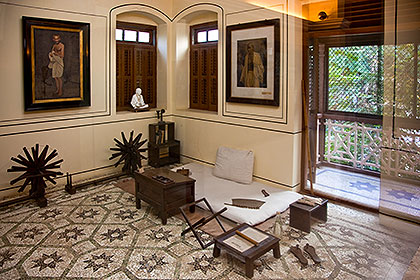
Whenever Mahatma Gandhi was in Mumbai between 1917 and 1934, he stayed here, in the Mani Bhavan Building on Laburnum Road. It has now been converted into a museum and research center. We visit for about half an hour, refreshing our knowledge of Gandhi's life and accomplishments.
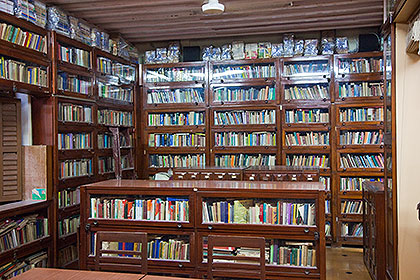
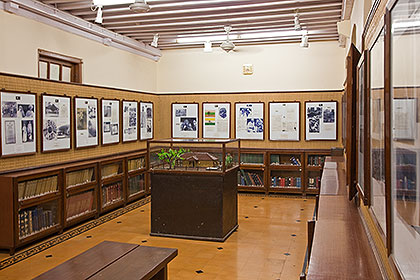
Jain Temple on Malabar Hill
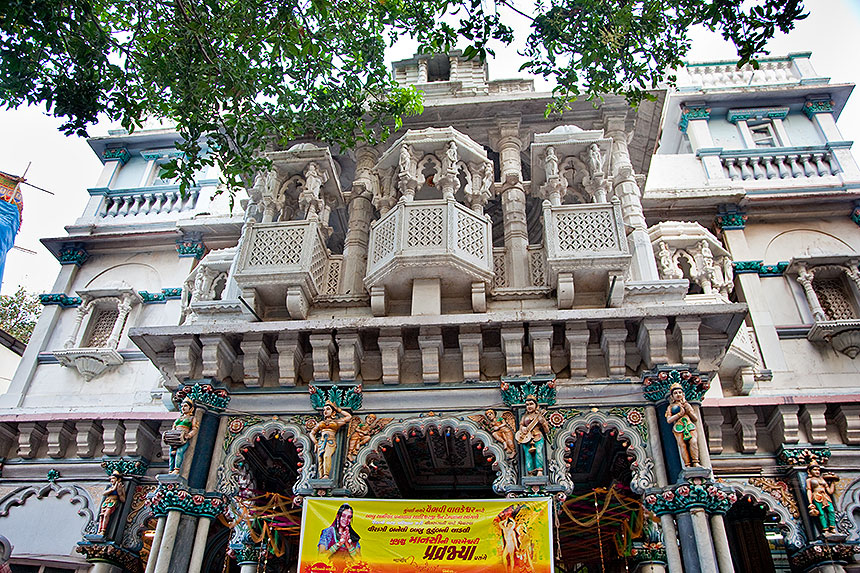
The white marble Babu Amichand Panalal Adishwarji Jain Temple, completed in 1903, is dedicated to Adinath, the first Jain Tirthankara. It is located on Malabar Hill, an upscale neighborhood that is home to many Jains, and particularly Jain stockbrokers, who frequent the temple in the morning before starting their business day. We are here in the afternoon, and once we have removed our shoes we are welcome to explore the white marble temple, which is decorated with a dazzling array of colorful objects and details.
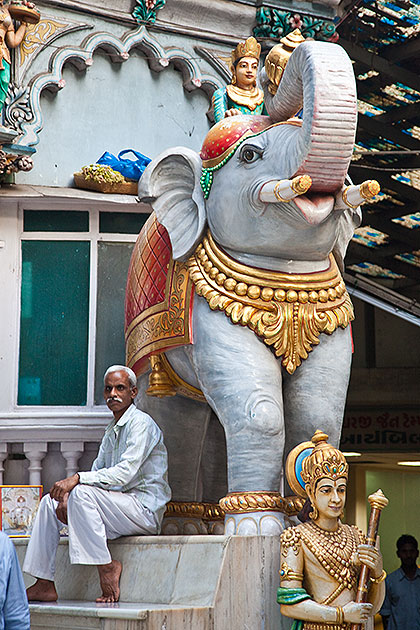
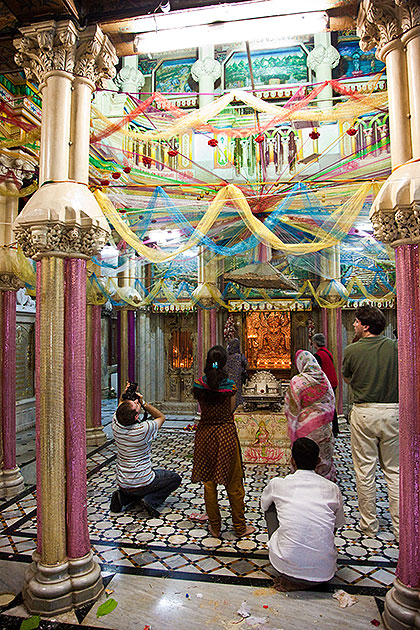
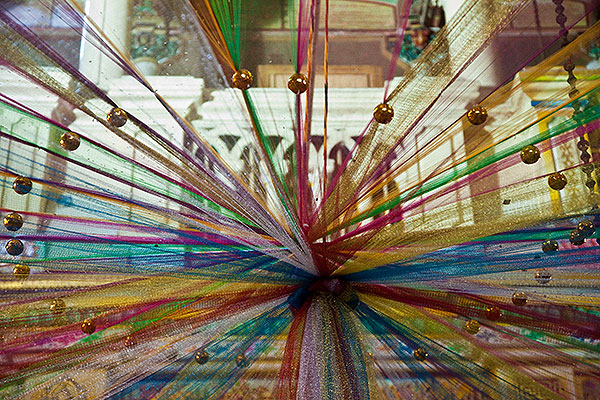
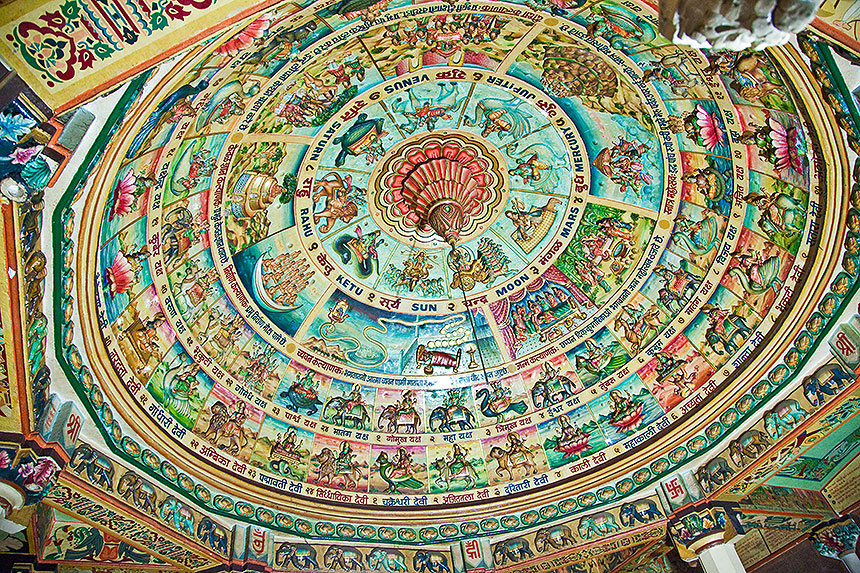
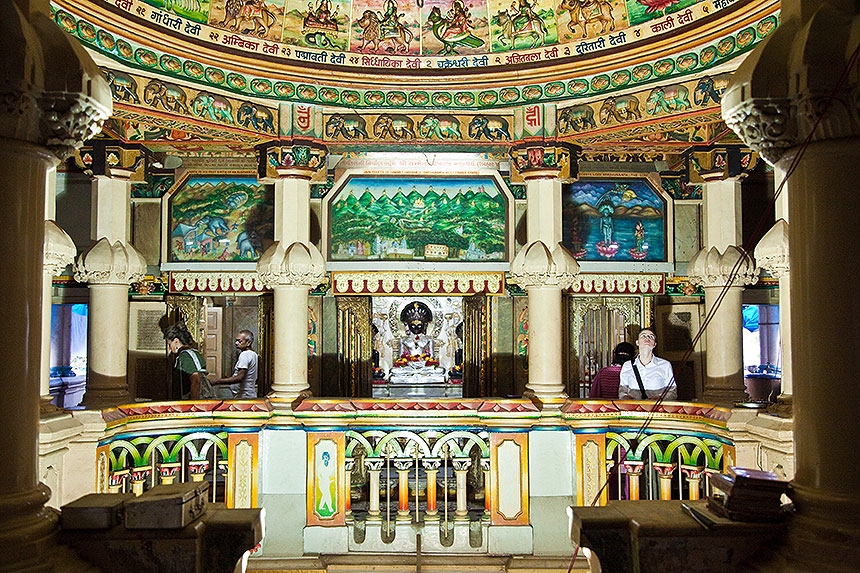
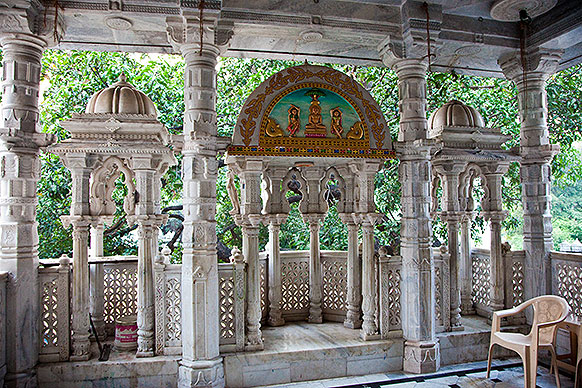
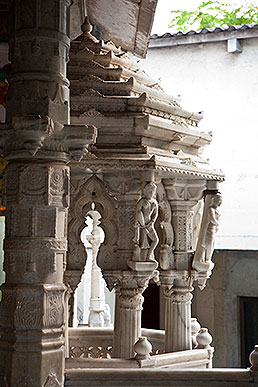
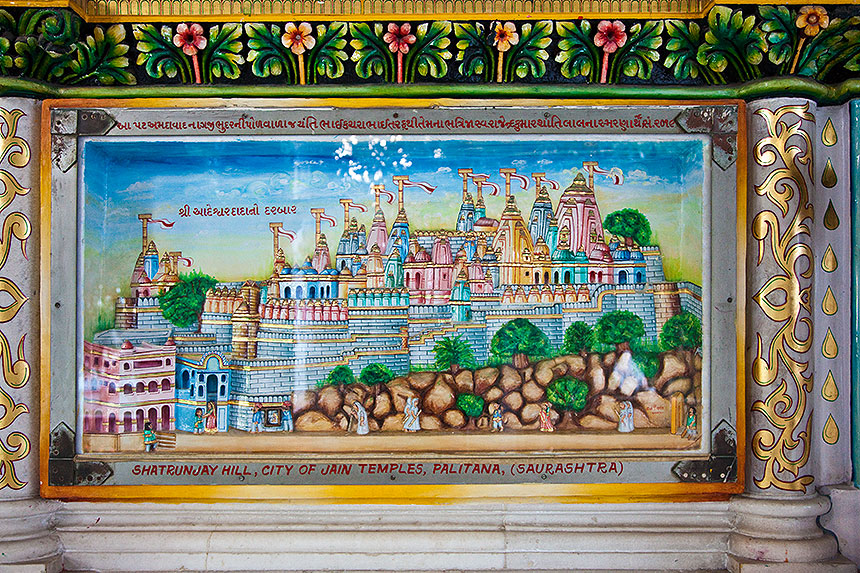
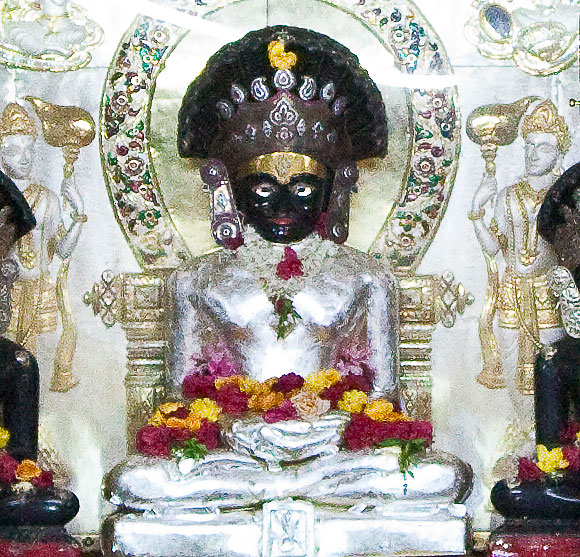

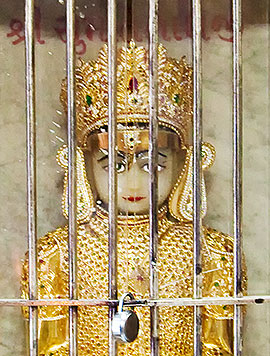
A trio of black marble idols presides over the main shrine, while a bejeweled trio of figures in white marble and gold appear nearby. One of them seems to be in jail.
